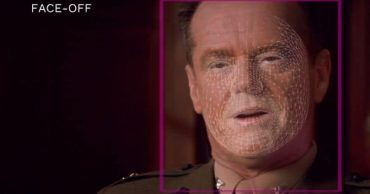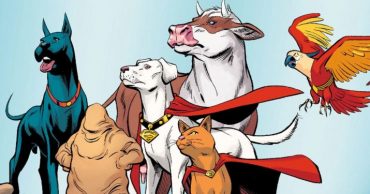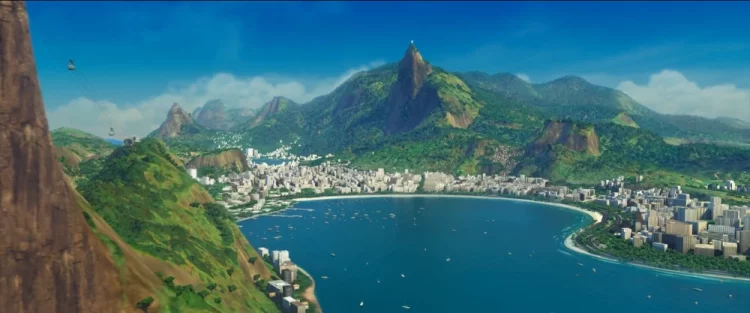
credit: Rio
If you’re looking for something to watch that tackles environmental issues but not some boring documentaries, then the Rio movie series is a good fit for you. This two-part series of animated films follows the adventures of Blu, the blue Spix’s macaw, who served as the protagonist in both movies. In the first film, he met Jewel, a female of his species, and he tried to mate with her to save their species from extinction. Near the end, it was shown that the two had three unnamed chicks. The second movie showed them venturing into the Amazon rainforest to reunite with a hidden tribe of their species. However, the reunion wasn’t all rainbows and sunshine, as the franchise highlighted another major issue the world faces today.
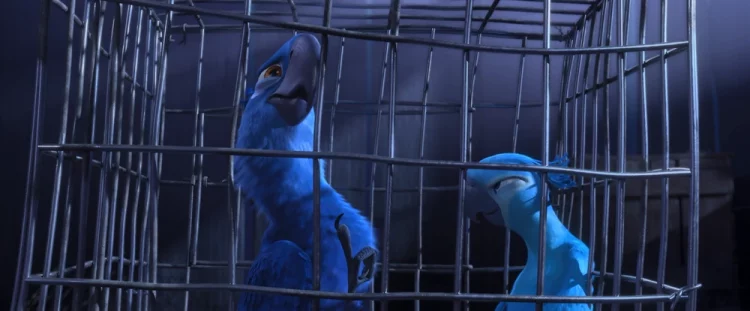
credit: Rio
Rio 1 – A Film About Species Extinction
The first movie began by introducing the main character who was a Spix’s macaw, which, at the time of writing, is labeled as Extinct in the Wild by the IUCN. The character choice was unique, especially since most animated films featuring animals have common animals as main characters. Take, the Secret Life of Pets, for example, where the main character is a dog.
From this, the movie had already made a great choice in their character sets, and this choice will play on the movie’s message. In the beginning parts of the movie, the young Blu is rescued by a young Linda in the American state of Minnesota. Linda works in a bookstore where she lets Blu freely roam around. One day, this would make him visible to the wandering ornithologist (bird expert) Tulio, who was traveling the world in search of the only male of his kind to breed with the last female he had in his aviary.
Eventually, Linda and Blu traveled to Rio de Janeiro (the movie’s eponym) to meet Jewel. Tulio and Linda then left the two birds to mate when they observed that their interactions were going well. The two went to have dinner in a restaurant outside when they received news that the two birds were abducted from the lab.
This event shows that human activities can be the cause of some species’ numbers depleting. In the movie, smuggling was depicted as something that intends to profit off the rarity of these birds. And this claim is verified when the smugglers’ themselves thought of selling the rare species off the black market and making money because of how “special” these birds are. And who knows where and how the birds would end up should the smuggling be successful? The movie here showed that humans abuse the animals for their profits; they make money off dwindling species which, in turn, makes the species dwindle more.
Long story short, the two birds were rescued, and in the closing scene, three tiny blue chicks were shown, implying that the repopulation effort was successful. The babies’ names weren’t known until the second movie, three years later.
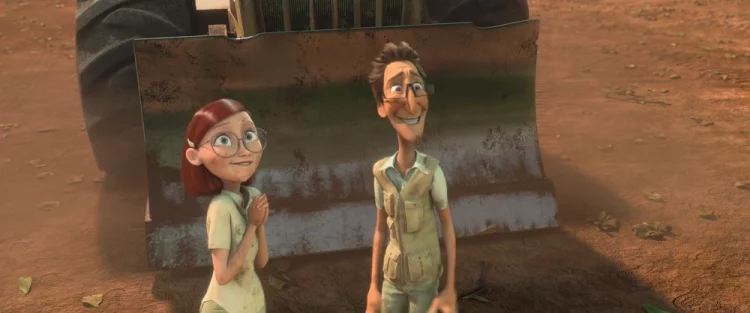
credit: Rio
Rio 2 – A Film On Deforestation
The movie opens when the now-married Linda and Tulio are on a boat in a river in the Amazon. Judging by the heading “deforestation” and the “Amazon,” you might probably know where this is going. And you are right, as the movie now intends to show the depletion of forests as another environmental issue that we need to act upon.
After realizing that there might be more of their kind deep in the rainforest, Blu, Jewel, and their three children, Bia, Carla, and Tiago, sought to find them. There, they were introduced to Eduardo, the leader of the blue macaw tribe, who had an anti-human sentiment. We can’t even blame him, as the only humans he had ever met in the forest were loggers who destroyed their habitat. That itself is very telling that loggers have a huge presence in the forest, and that is a problem. The ending scene showed Linda, Tulio, and the birds fighting to prevent the loggers from taking a new portion of the forest.
The Rio movie franchise isn’t all that of a child’s movie just because it’s animated. In the end, the two movies tried to show us the environmental issues that we have to take action on. By showing a sample of a species that is nearing extinction and the flagrant cutting of trees in the Amazon rainforest, the movies called for action to save the planet and save the dying species of animals.two-part series
 Follow Us
Follow Us
